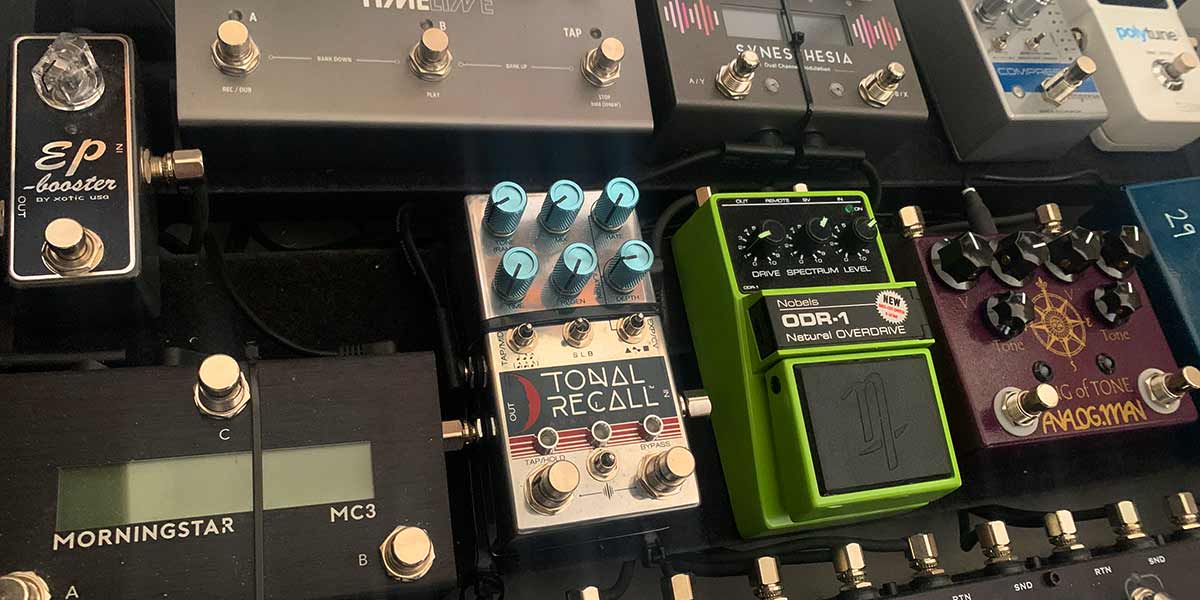
Guitar effects pedals have revolutionized the music industry by enabling guitarists to shape and transform their sound in unimaginable ways.
From the iconic wails of Jimi Hendrix’s wah-wah to the ethereal soundscapes of post-rock bands, these devices have become essential tools for musicians across genres. But how do these seemingly magical boxes work? Beneath the surface, there’s a fascinating world of science and technology that drives the creation of those captivating tones. In this article we answer the question how do guitar effects pedals work?
How do Guitar Effects Pedals Work
At their core, guitar effects pedals are signal processors. They manipulate the audio signal generated by the guitar in various ways to produce desired sonic effects. The journey of your guitar signal through an effects pedal involves several key stages: input, processing, and output.
1. Input
When you play your guitar, the vibrations of the strings create an analog electrical signal. This signal, usually at a low voltage, enters the pedal through the input jack.
2. Processing
Inside the pedal, the signal encounters a range of components designed to alter its characteristics. These components can include:
- Transistors and Op-Amps: These electronic components amplify and shape the signal. They can boost weak signals or clip strong signals to create distortion.
- Capacitors and Resistors: These passive components can create filters that affect the frequency content of the signal. For instance, a low-pass filter allows low frequencies to pass through, while a high-pass filter lets high frequencies through.
- Digital Signal Processors (DSP): Many modern pedals use digital technology for processing. Analog-to-digital converters (ADCs) convert the analog signal to digital, which can then be manipulated by algorithms. Digital effects offer incredible flexibility and can replicate a wide range of sounds.
- Memory and Control Circuitry: In digital pedals, memory stores presets and user settings. Control circuitry manages user input (e.g., turning knobs) and communicates with the processing components.

3. Output
After processing, the modified signal exits the pedal through the output jack, headed toward your amplifier. The changes made to the signal during processing result in the unique sound effects that pedals produce.
Common Types of Guitar Effects
Guitar effects pedals come in various types, each with its own set of scientific principles. In our beginner’s guide we provide you with a more elaborate overview of different types.
- Distortion and Overdrive: These effects manipulate the amplitude of the signal, introducing clipping and saturation to create a gritty, distorted tone. This is achieved through non-linear signal processing.
- Modulation: Effects like chorus, flanger, and phaser alter the phase, frequency, and time characteristics of the signal. This is done using delay lines, comb filters, and phase shifters.
- Time-Based Effects: Reverb and delay pedals create echoes and reflections by manipulating time and amplitude of the signal. Digital delays utilize DSP to achieve precise timing control.
- Filters: Wah-wah and envelope filters shape the frequency response of the signal. The pedal’s circuitry accentuates or attenuates certain frequencies based on user input.
Advancements in Technology
Over the years, guitar effects pedal technology has advanced significantly. From analog designs to digital processing, the options available to musicians have expanded greatly. Digital pedals offer more presets, versatile sound manipulation, and often a more compact form factor. However, some purists argue that analog pedals provide a warmer and more authentic sound due to the continuous nature of analog signals.
In Conclusion
The world of guitar effects pedals is a playground of scientific principles that empower musicians to create their unique sonic landscapes. From manipulating voltages and currents using electronic components to harnessing the power of digital processing, these pedals offer endless possibilities for creative expression. Whether you’re a musician looking to experiment with new sounds or a curious enthusiast delving into the science behind music, understanding how guitar effects pedals work adds another layer of appreciation for the artistry that goes into producing captivating tones.
